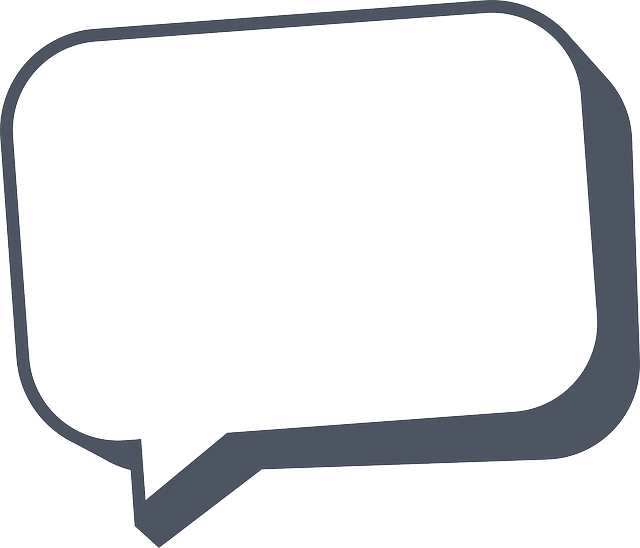A business brochure can do lots of things: build your image, educate, establish your credibility, help you sell a product or service, inform, screen prospects, or add value.
Readers expect to find something uncomplicated and easy to understand when they pick up a brochure. Anything else can throw them for a loop and make feel like them tossing out the gem that you paid plenty to have written, designed and printed.
I just about laughed out loud when I was handed a brochure about craniosacral therapy. Here are just the first three lines of it:
“Craniosacral therapy (CST) is a gentle yet powerful type of bodywork. Developed in the 20th century, CST has its roots in osteopathy. Based on human structure (anatomy), and its function (physiology), CST works with the central nervous system, its supporting structures, and the cerebral spinal fluid (CSF), which is made in the ventricles of the brain.
Forgetting all of the errant commas, let me just ask you “Who do your suppose this brochure for–the American Medical Association?”
No! It’s for prospective patients! Can you believe it?!
This brochure is clear as mud to everyone except doctors, chiropractors and CST practitioners. The lay public will run screaming for the exits!
Here are the first three sentences again, written so they’re at least a tad more understandable…
Craniosacral therapy (CST) is gently-guided body movement that produces powerful results. Founded in osteopathy (a way of pushing and moving bones and muscles to treat patients who are sick or in pain), CST works with the central nervous system, its supporting structures, and cerebral spinal fluid (CSF).”
Better still…
“Craniosacral therapy (CST) may seem like magic but it’s based on solid medical science. Using gentle touch, your practitioner will evaluate your central nervous system and the spinal fluid near the base of your skull to discover where your body is out of balance as the result of emotional or physical traumas you’ve experienced.”
See the difference? You don’t have to come across sounding like the physician from hell (or Harvard) to be believable! If your customers and clients can’t figure out what it is you’re trying to say, they won’t read the darn thing. Even worse, they may think you’re trying to baffle them with you-know-what. So make what you do or offer easy for them to understand. Please!
Every brochure is promotional to some extent. It’s promoting something: a product, service, cause, company, system, idea or plan.
Use brochures…
as leave-behinds to remind a customer what was shared or shown so they don’t have to take notes. Be sure your leave-behind lists your contact information so they can get in touch with you if they decide to engage again later on.
for inquiry fulfillment when a prospect seems to be “window shopping” and isn’t yet ready to make a commitment, to save you time and money until he or she decides to do business with you. When used this way, be sure the title of your brochure is riveting and that it contains useful information. (Example: “How to Slash Your Pharmacy Bills by More than 50%”)
as direct mail to give your prospects the details they need (illustrations, photos, etc.) to decide to do business with you. (You’ll include a sales letter with the brochure, of course.)
as a point of sale (POS) display so the public can spot it and take one home to look over at leisure. Be sure your POS brochure has an attractive, riveting cover that compels visitors to pick it up. Colorful photos and illustrations help, as do powerful headlines that tell a story. (“I Was Astonished to Learn these Facts about _________”)
as an additional sales tool to act as a memory prompt while you’re presenting, to illustrate your sales pitch, and to add believability to your pitch.
There are three basic brochure types: product, service, company overview.
Your product brochure can throw a spotlight on a single product or a line of products. This brochure explains what your product (or line) is, how it’s assembled, what it’s made of, how it works, why it’s better than similar products, and which features (accessories, models, sizes) it offers.
Your service brochure explains what your service is, why you need it, and how to contact you. If you have testimonials and facts to back up your claims, use them!
Your company (or corporate) brochure gives an overview of your company and its capabilities.
Brochures come in all shapes and sizes but the ones you’ll see most often are…
trifolds (aka slim jims) designed to fit easily into a standard #10 envelope or literature rack. It can have more than one page/six panels but usually doesn’t. It’s used for those times when a little information is all that’s needed.
full-size (88.5″ x 11″) pages. Most of the ones you’ll see have four to eight pages. Sull-size brochures give you additional space to explain and show more than do trifolds/slim jims.
four page brochures are formed by folding an 11 x 17 inch piece of paper in half; eight page brochures consist of stapling two 11 x 17 inch pieces of paper in the middle and stapling them at the fold.
Brochures must persuade
Persuasion is what separates a brochure from a booklet or pamphlet. It is designed to throw a spotlight on benefits. A great brochure gives readers plenty of reasons to engage with what’s being offered instead of accepting substitutes. Reasons often include quality, cost, efficiency, savings, and performance, and other attributes.
First things first: Do you even need a brochure?
Ask yourself, “Are customers asking for a brochure? Is your sales force? Are you selling to businesses or industries? Are you selling through agents? Are you running ads, sending out media releases, or using telemarketing to get leads? Are you using direct mail to generate leads? Is your product or services one that your prospects need time to ponder before making a decision to engage? Does your product or service have engaging visual features and benefits? Is your business brand new? Do you want to boost sales or build your image?” If you answer “Yes” to any of these then yes, you need a brochure!
But before you write it (or have it written for you) you need to know the subject it will tackle, the scope of information you want to include, and the overall theme or story you want to tell. You need to know (or assemble) the facts that will lend credence to the piece.
There’s more … but this is enough to digest for one sitting!
(Thank you to Robert W. Bly whose book THE PERFECT SALES PIECE: A Complete Do-It-Yourself Guide to Creating Brochures, Catalogs, Fliers, and Pamphlets has informed my words. I highly recommend his books to anyone who is writing your own copy or anyone who is writing copy for others. Although he’s pedantic, his information is pure gold so forgive the fact that he comes across like a prickly school teacher, even when it comes to his copy writing. “Old school”, in a word. But many clients prefer old school, so he’s wedged himself nicely into that niche! Read him for his definite wisdom, not for enjoyment or for his style, or you’ll be disappointed. Develop your own niche and style; Bly has “old school”/corporate covered and makes a great living at it.)
P.S. Check out my brochure under the My Brochure tab.




